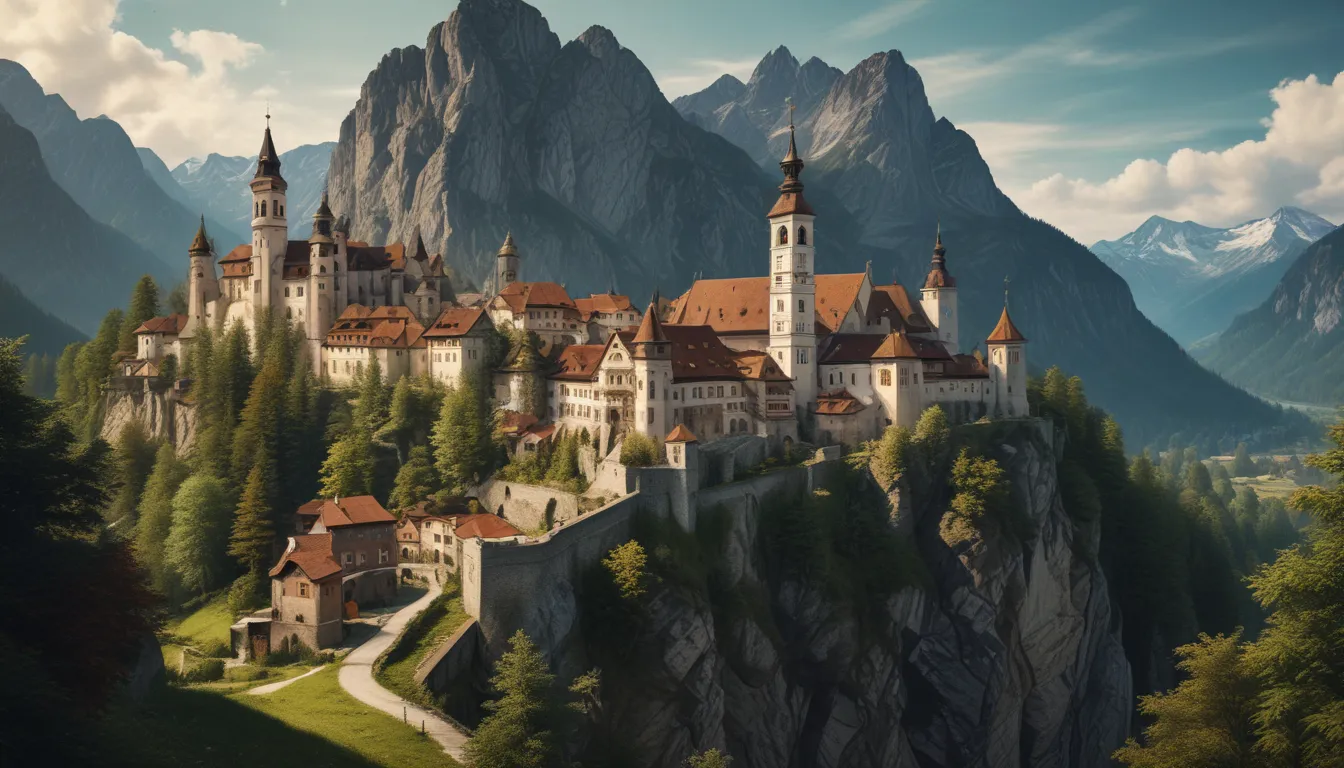The images in our articles may not match the content exactly. They are used to grab your attention, not to show the exact details in the text. The images complement the text but do not replace it.
Austria, a country renowned for its rich history and breathtaking landscapes, is home to some of the most captivating monasteries in the world. These sacred sites are not just places of worship but also repositories of art, culture, and history. Austrian monasteries offer a unique glimpse into the spiritual and architectural heritage of the region. From the majestic Melk Abbey overlooking the Danube River to the serene Stift Heiligenkreuz nestled in the Vienna Woods, each monastery tells a story of faith, resilience, and artistic endeavor. In this article, we will embark on a journey through fascinating facts about these historical sanctuaries, revealing their significance and the treasures they hold. Whether you’re a history buff, an architecture enthusiast, or simply seeking a moment of peace, Austrian monasteries have something to offer everyone.
Unveiling Austria’s Rich Monastic Tradition
Austria’s picturesque landscapes and rich history have given rise to some of the most fascinating monasteries in the world. These sacred sites not only serve as places of worship but also house centuries of culture, art, and learning within their ancient walls.
- Melk Abbey: Founded in 1089, Melk Abbey stands proudly atop a rocky outcrop overlooking the Danube River. This Benedictine abbey is renowned for its stunning baroque architecture. The library at Melk Abbey is home to over 100,000 volumes, including many rare manuscripts, showcasing the monastery’s dedication to preserving knowledge through the ages.
- St. Florian’s Priory: An Augustinian monastery founded in the 9th century, St. Florian’s Priory boasts impressive baroque architecture and houses the largest monastic library in Austria, with approximately 150,000 volumes.
- Heiligenkreuz Abbey: Established in 1133, Heiligenkreuz Abbey is one of the oldest continuously occupied Cistercian monasteries in the world. Its Romanesque and Gothic architecture provides a glimpse into medieval monastic life.
The Architectural Marvels of Austrian Monasteries
Austrian monasteries stand as architectural marvels, showcasing a blend of styles from Romanesque to Baroque that reflect the evolution of art and society over the centuries.
- Seitenstetten Abbey: Host of annual music festivals, Seitenstetten Abbey showcases classical and sacred music, preserving Austria’s rich musical heritage.
- Admont Abbey: Serving as both a spiritual center and a cultural hub, Admont Abbey houses museums displaying religious art, manuscripts, and natural history collections.
Unlocking the Spiritual and Cultural Significance
Austrian monasteries play a vital role in the spiritual and cultural life of the country, serving as centers of education, knowledge preservation, and community engagement.
- Klosterneuburg Monastery: Founded in 1114, this monastery features a stunning baroque garden that served both contemplative and medicinal purposes.
- Zwettl Abbey: Dating back to the 12th century, Zwettl Abbey is renowned for its vineyards, contributing to Austria’s winemaking tradition.
The Role of Monasteries in Education and Preservation
Throughout history, Austrian monasteries have been instrumental in maintaining and sharing knowledge through scholarly activities and educational programs.
- Schottenstift: Founded in 1155, Schottenstift in Vienna boasts a long tradition of scholarly activity, with a historic library and archives that serve as valuable resources for researchers.
- Göttweig Abbey: Overlooking the Danube Valley, Göttweig Abbey hosts educational programs and workshops, emphasizing community education and engagement.
The Monastic Contribution to Austrian Cuisine
Austrian monasteries have left a mark on the country’s cuisine, with many traditional recipes having originated from these spiritual centers.
- Engelszell Abbey: As Austria’s only Trappist monastery, Engelszell Abbey produces cheese, liqueurs, and Trappist beer, showcasing the tradition of self-sufficiency and craftsmanship.
- Seasonal Treats: Many monasteries specialize in baking seasonal treats and breads using centuries-old recipes, blending culinary arts with spiritual practice.
Preservation Efforts and Modern Challenges
Despite their historical and cultural significance, Austrian monasteries face modern challenges, including the need for preservation and adaptation to contemporary needs.
- Austrian Monastery Initiative: Initiatives like the Austrian Monastery Initiative aim to support monasteries in preserving their heritage while meeting modern demands.
- Sustainable Tourism: Sustainable tourism programs are being developed to allow visitors to experience monastic life while respecting the sanctity of these historic sites.
Embracing the Future of Austrian Monasteries
Austrian monasteries are evolving to remain relevant in the 21st century, integrating modern technology, renewable energy projects, and educational programs.
- Retreats and Educational Programs: Many monasteries now offer retreats and educational programs, inviting visitors to experience monastic life firsthand and learn about spiritual practices.
- Digitization of Manuscripts: Modern technology is being used to digitize ancient manuscripts, making them accessible to a global audience and ensuring their preservation for future generations.
- Renewable Energy: Renewable energy projects, such as solar panels installed on monastery lands, reflect a commitment to sustainability and care for creation.
- Evolution of Monastic Communities: As living communities, Austrian monasteries continue to evolve, embracing new challenges while staying true to their spiritual roots and historical legacy.
Embarking on Austria’s Spiritual Heritage
Austria’s monasteries offer a deep dive into a rich, spiritual tapestry woven over centuries. From stunning architecture to tranquil gardens, each corner tells a story of faith, art, and history. These sacred sites are not just for history buffs or spiritual seekers but for everyone seeking a moment of peace and wonder in a hectic world. Don’t miss the opportunity to explore Austria’s cultural gems and experience the serenity and spirituality that these timeless treasures have to offer. Step into a world of beauty, history, and spiritual enlightenment at Austrian monasteries.






